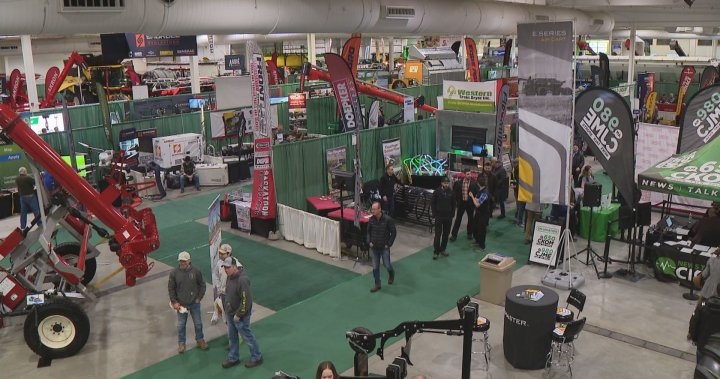The Western Canadian Crop Production Show, held annually in Saskatoon, Saskatchewan, showcases the latest advancements in agricultural technology, drawing farmers from across the province eager to explore the tools that are reshaping their industry. From cutting-edge drones to autonomous combines, the exhibition highlights the dramatic transformation occurring in modern agriculture, offering a glimpse into the future of farming. Global News reporter Nicole Healey attended the event at Prairieland Hall to document the innovative technologies on display and to speak with farmers about the impact of these advancements on their operations. This report delves into the specifics of these technological developments, exploring their benefits, challenges, and potential to revolutionize agricultural practices.
One of the most prominent technological trends in modern agriculture is the increasing use of drones. Equipped with high-resolution cameras and sophisticated sensors, these unmanned aerial vehicles offer farmers an unprecedented perspective on their fields. Drones can be used to monitor crop health, identify areas affected by pests or disease, and assess soil conditions. This data allows farmers to make more informed decisions about irrigation, fertilization, and pest control, optimizing resource utilization and minimizing environmental impact. The precision and efficiency offered by drones represent a significant advancement over traditional methods of crop monitoring, which often relied on visual inspections and manual sampling.
Another transformative technology showcased at the Crop Production Show is the development of self-driving combines. These autonomous machines utilize GPS technology and sophisticated algorithms to navigate fields and harvest crops without human intervention. The benefits of this technology are manifold. Self-driving combines can operate around the clock, maximizing efficiency and minimizing harvest time. They also reduce the need for manual labor, addressing the growing challenges of farm labor shortages. Furthermore, the precision of autonomous harvesting reduces crop loss and improves overall yield. While the initial investment in self-driving combines can be substantial, the long-term cost savings and increased productivity make them an attractive option for many farmers.
Beyond drones and autonomous combines, the Crop Production Show also featured a range of other innovative technologies. These included precision planting systems that optimize seed spacing and depth, automated irrigation systems that respond to real-time weather data, and sophisticated software platforms that analyze data from various sources to provide farmers with actionable insights. This convergence of technologies is creating a more data-driven and efficient agricultural landscape, enabling farmers to make better decisions, optimize resource use, and improve overall profitability.
The adoption of these advanced technologies, however, is not without its challenges. The cost of implementing new technologies can be a barrier for some farmers, particularly smaller operations. Additionally, the increasing reliance on technology requires farmers to develop new skills and adapt to changing practices. Access to reliable internet connectivity is also essential for many of these technologies to function effectively, and this can be a challenge in rural areas. Addressing these challenges through government support, industry partnerships, and educational initiatives is crucial to ensure that all farmers can benefit from the advancements in agricultural technology.
The Western Canadian Crop Production Show provides a valuable platform for farmers to learn about the latest technologies, connect with industry experts, and share their experiences. The event highlights the rapid pace of innovation in agriculture and underscores the importance of embracing technology to address the evolving challenges of food production. As the global population continues to grow and the demand for food increases, the adoption of these technologies will be critical to ensuring sustainable and efficient agricultural practices. The insights gained at the Crop Production Show offer a glimpse into the future of farming, a future where technology plays an increasingly important role in feeding the world.
The report by Nicole Healey provides a window into this evolving agricultural landscape. By showcasing the technologies on display and speaking with farmers, Healey offers a valuable perspective on the impact of these advancements. The report underscores the importance of events like the Western Canadian Crop Production Show in facilitating the adoption of new technologies and fostering innovation within the agricultural sector. As the industry continues to evolve, ongoing dialogue and collaboration between farmers, technology developers, and policymakers will be essential to ensuring that the benefits of technological advancements are shared by all. The future of agriculture is undoubtedly intertwined with technology, and the Western Canadian Crop Production Show serves as a testament to the transformative power of innovation in this crucial sector.










